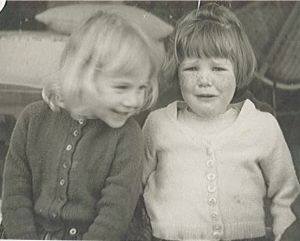The Wake Up Project provided an event at the Melbourne Convention Centre: Women Leading Change that I was fortunate to attend with a friend.
We joined 500 women who listened to some remarkable and inspiring women talk about change. Seane Corn; Janine Shepherd; Tara Moss; Lucy Perry; Clare Bowditch; and Tami Simon were each introduced by Jo Wagstaff.
Seane Corn is a yoga teacher and activist who created the movement, Off the Mat and Into the World. She began the day talking about “Beauty, Bravery, & Living Your Truth”. She shared her personal story explaining how that has led her to where she is today. Advising us all to accept our “shadow” as well as our “light”, she explained that only then could we be truly authentic with others and ourselves.
“Our wounds become our wisdom.” ~ Seane Corn
Janine Shepherd followed to talk about “The Power of Acceptance”. She is living proof of this as someone who was hit by a truck while cycling in the Blue Mountains, almost dying, being told she would never walk again or have children; and yet there she stood and walked unaided, vibrant, mother of three adult children, and a commercial pilot. You can hear her story in her TED Talk.
“Life is not about having it all. Life is about loving it all.” ~ Janine Shepherd
The gorgeous Tara Moss followed to talk “On Courage, Self-Care, and Why Women’s Voices Matter”. She says that first you must prioritise your own health before you are in a position to help others. She provided some interesting statistics to illustrate how women’s voices are not represented in government, business and organisations. Important decision making about women’s issues such as abortion, domestic violence, child care, etc are being discussed and decided by male voices, as they make up the significant majority of representatives present at the discussion tables.
Lucy Perry talked amusingly about “Fearless Living: How Fun, Forgiveness, and Fearlessness Can Change the World.” She says that ordinary women can do extraordinary things and she is proof of this through her work alongside Australian obstetrician Dr Catherine Hamlin as the former CEO of Hamlin Fistula Ethiopia in Australia.
Clare Bowditch entertained us after lunch with “Oh F**k, I Don’t Know What To Call This Talk”. She had 500 women singing in two-part harmony. And she talked about how we are not perfect, all of us are works-in-progress, and how we must “learn to sit in the uncomfortable now.” She says her most commonly asked question is “Why did Patrick have to die?”
Tami Simon is the founder of Sounds True and she talked next about “Being True: Showing Up Fully in Your Work, Life and Love.” Her main principles are: individuality, being true, and heeding the call.
Her findings from her interviews “Insights At The Edge” are these:
- The spiritual journey is a journey of subtraction. What can I let go of?
- The disciplines of spiritual life are about the shedding process not self-improvement.
- There is no end to the spiritual journey.
- Every teacher is partial.
- There is no escaping loss and sorrow.
- Everything depends on how much you trust.
- The most important thing is to know what the most important thing is to you. “Can I give myself to the love and connectedness of my life?”
Seane Corn closed the day challenging us to find our voice and speak out. “Start Where You Are: It’s Time to Rise”. She says to celebrate an authentic human experience, be able to say ‘sorry’, self-care, own your ‘shadow’, and don’t be an arsehole.
Thank you to The Wake Up Project for organising this day. And thank you to Alana for inviting me to spend this special day with you, and being inspired by these amazing women.






